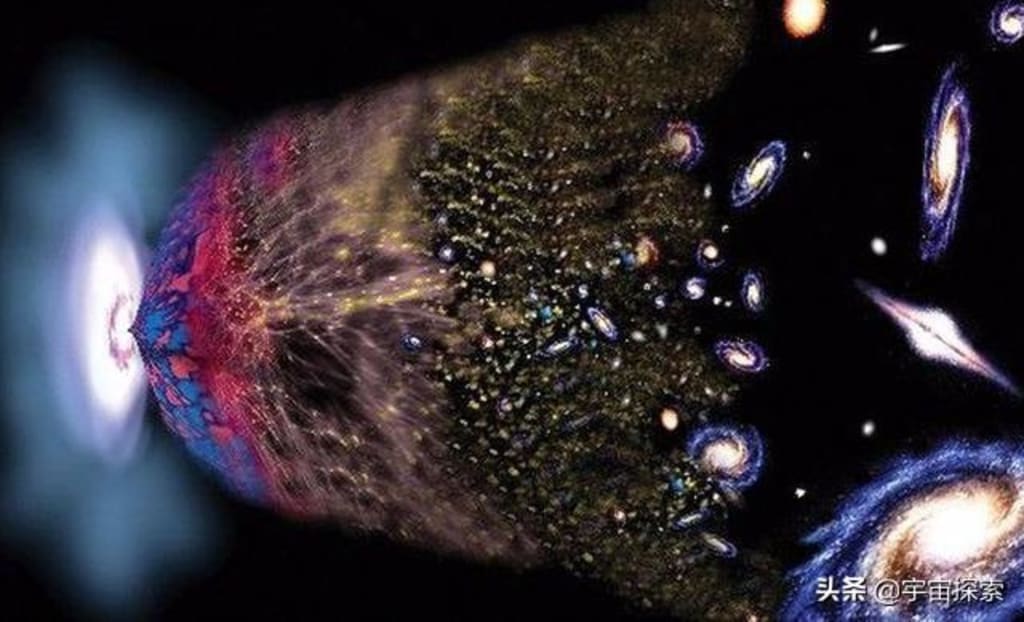
According to the existing observational data and theories, the observable universe appeared about 13.8 billion years ago, with an error margin of ±20 million years. There is no solution to the discussion of "whole universe" or "multiverse". The size and existence of the unobservable part of the universe cannot be determined, and it may not have originated through a similar process as the observable universe.
The event that gave rise to our universe was called the Creation of the World in ancient times, then the Big Bang, and in Hawking's case the Hawking Hartl quantum event with no boundary conditions, and in the case of simulated cosmology, the model starts working.
In the 1960s, Hawking and Roger Penrose showed that when the curvature of space was steep enough that space-time would inevitably collapse, Einstein's equations would fail and a new theory of quantum gravity would be needed to explain. The Penrose-Hodgkin point theorem states that space-time cannot unfold smoothly and stably from a single point and that a "Big bang singularity" does not exist.
In 1980, Alan Guth, an American physicist, proposed inflation: the very early universe expanded at an alarmingly fast rate in a very short period of time between 10^-35 seconds and 10^-34 seconds.
Inflationary cosmology predicts the inhomogeneity of the universe and gives an estimate of the degree of inhomogeneity. According to Werner Heisenberg's uncertainty principle, there were tiny quantum thermal fluctuations in the universe during inflation, which amplified these fluctuations to the cosmological scale and became the seed for all structures in the universe today. Inflation theory predicts that these initial fluctuations are basically scale invariant and satisfy Gaussian distribution.
This prediction has been precisely confirmed by measuring the microwave background radiation.
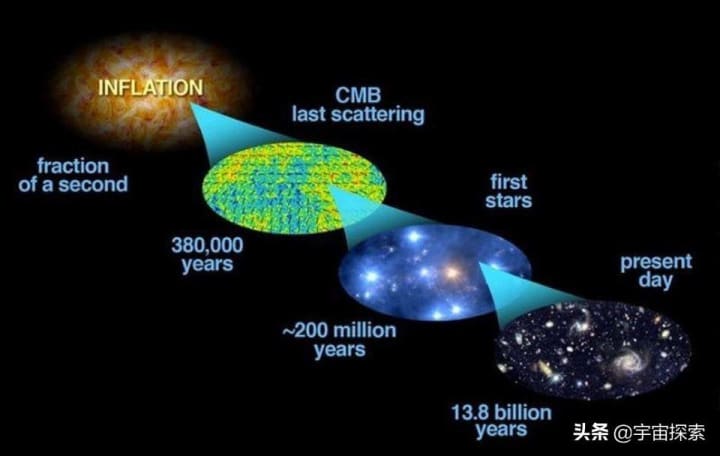
Hawking applied Feynman's summation history method to the study of the origin of the universe, which involves summing up possible events at every world line in space and time, meaning that the boundary conditions of the universe must be considered, and the most special boundary condition is that there are no boundaries. In 1981, Hawking published his paper "Boundary Conditions of the Universe," suggesting that the universe may have no boundary, that is, no origin or end.
In 1983, Hawking teamed up with James Hartl to propose a model of a universe without boundaries:
Before Planck's time, because of the uncertainty principle of quantum mechanics, the universe had no space-time boundary;
In the very early universe, where there was only space and no time, the notion of a cosmic origin made no sense.
Since then, Hawking has talked many times about how the universe could emerge from nothingness through a quantum mechanism.
We can odel that the total energy of the universe is zero.
Given that the total energy of the universe is zero, the simple and effective way to balance the energy of the stars is to lift gravity: gravity is attractive, gravitational energy is negative, and you have to do work to pull gravitationally bound systems (like the Earth and the moon) apart.
However, the gravitational energy of the Earth is less than one billionth of the ENERGY corresponding to the constant mass of the material particles that make up the Earth. An object like a star will have more negative gravitational energy. The smaller the star is (the closer its different parts are to each other), the more negative the gravitational energy will be, but before the gravitational energy is enough to cancel out its constant mass, the star will be enough to collapse into a black hole, which has positive energy.
This leads to the relative stability of the vacuum, preventing random stars or black holes from popping up in your face -- preventing quantum fluctuations from hitting you in any particular way.
And the whole universe emerges spontaneously. Because gravity is shaped in spacetime, spacetime is allowed to be locally stable and globally unstable. On the scale of the whole universe, the energy of matter can be cancelled out to zero by the negative energy of gravitational energy.
Thus, the universe can create itself out of nothing, without a very special singularity, without any kind of creator.
Over the past few decades, many cosmological theories have been developed that do not require a Big Bang singularity.
The model of eternal inflation, popular more than 30 years ago, sees the universe as a pseudo-vacuum that expands at an endless rate, randomly creating islands of slower expansion.
This can be conflated with the distant future of the open universe or the Big Rip, and our universe will return to eternal inflation in the future.
In recent years, some of the stupidest "giving an impossible hypothesis and then deducing contradictions to talk about" eternal inflation must have a beginning "articles have also been published in peer-reviewed journals, so you're free to think in this area.
The main argument in favor of the simulated cosmology is this format:
If advanced civilizations are interested in "their past" or "how backward civilizations developed," and are able to build simulated worlds, they are likely to build simulated worlds to study simulated civilizations, This step can be repeated (an advanced civilization can simulate many backward civilizations) and multiple nesting (the simulated civilization can also build its own simulation when it reaches a certain stage), so the number of virtual civilizations in the multiverse should far exceed the number of real civilizations, and the probability of us being a virtual civilization is very high.
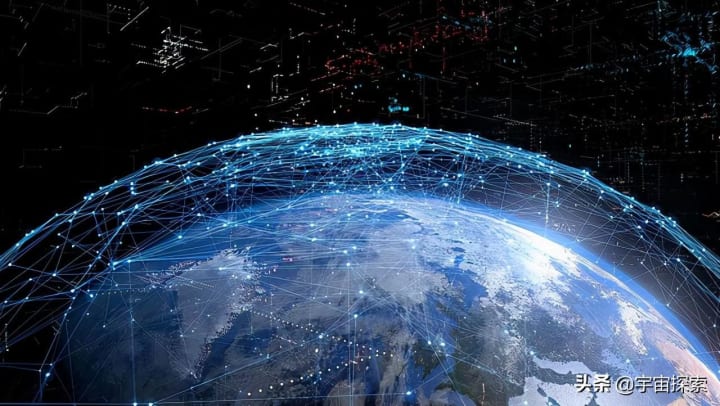
From 2001 to 2003, Nick Bostrom, a professor of philosophy at the University of Oxford in England, proposed that a very advanced supercomputer about the mass of a planet could perform 10^42 calculations per second, with the computational power to run simulations on the scale of human beings, including all of their memories, thoughts and feelings. Bostrom proposes a trilemma in which one of the following statements must be true:
1. The probability of civilization developing enough to run highly realistic simulations approaches zero;
2. The probability that advanced civilizations are interested in simulating evolutionary history approaches 0;
3. The odds that people like us are a simulation of an advanced civilization are approaching one.
Clearly, Bostrom says, neither one nor two are likely to be true, so only three is true.
Pessimists would obviously object that 1 is more likely to be true.
The seemingly complex underlying rules of the simulated universe don't have to be too complicated. Simple rules like Conway's Game of Life can create chaos and order on a large scale, as did Stephen Wolfram's mathematical structure, which was hot for a while in 2020.
As long as we can find serious errors in the simulation system, we can prove the theory. Depending on the system, this may be simpler than studying other theories of the universe, but it may be impossible for us to find fault with it, or the fault may look too much like a mechanism.
"What posture do we humans take to exist in this world?" is a very secondary question.
In the case that you believe that what you know is real, the person's posture is what your senses tell you to be.
When you believe that everything you recognize is a signal in your brain, or "your brain equivalent," there is no "real human posture," and all you can grasp is the model you have built.

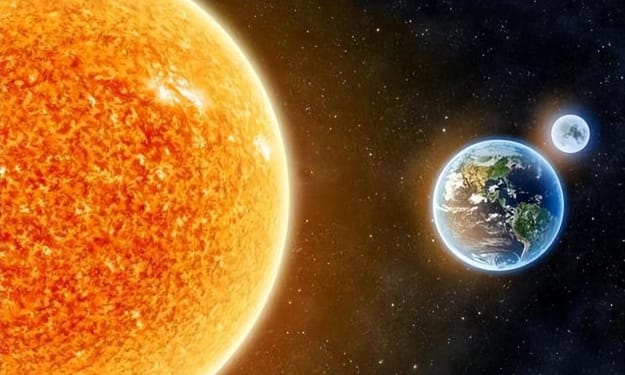
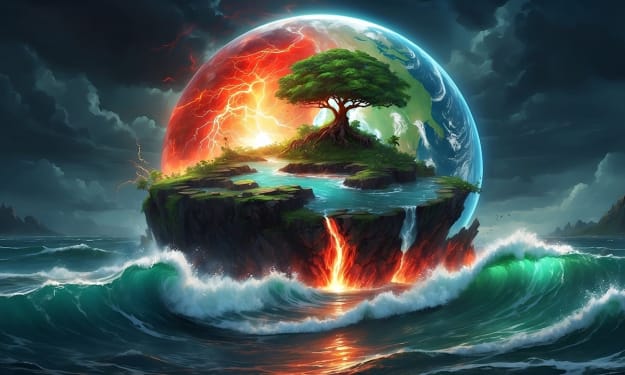


Comments (1)
Quite the creativity and many possibilities are out there waiting to be found.